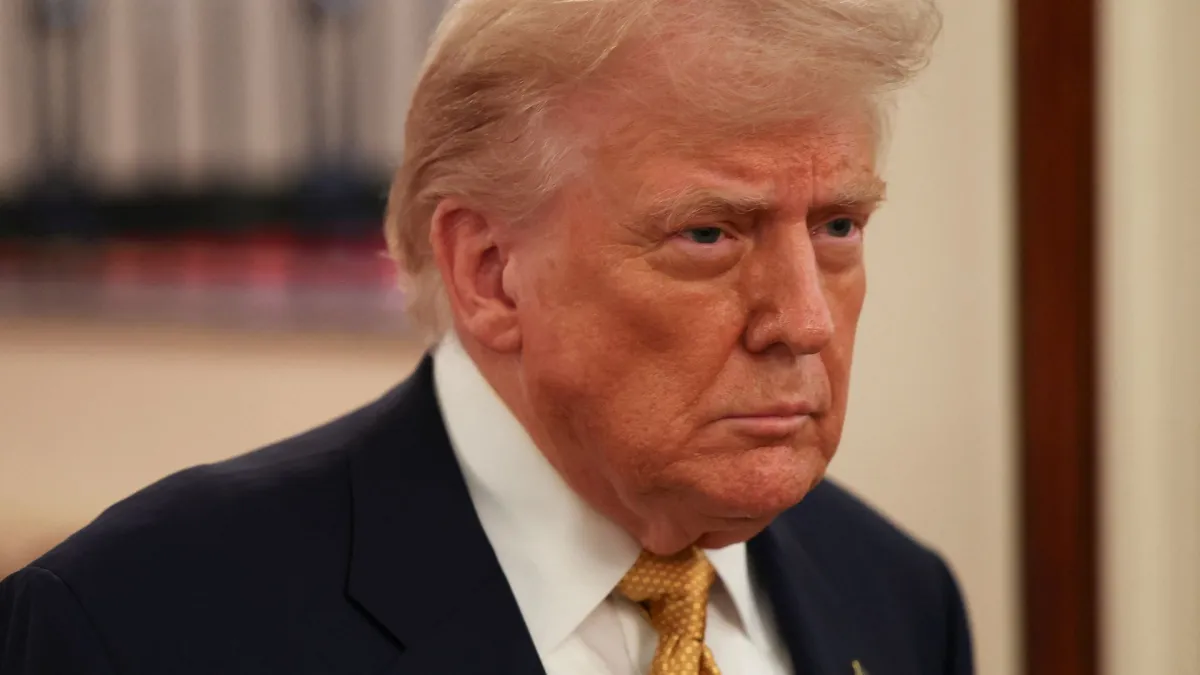
After months of delays, the bulk of President Donald Trump’s new tariffs took effect on Thursday, with goods from countries around the world facing higher import duties when they enter the U.S.
Trump originally announced a slate of new tariffs on April 2, which he referred to as “Liberation Day,” but amid widespread panic among investors around the world, many of the tariffs were put on hold to give trading partners time to negotiate more favorable terms. A handful of key trading partners, including Japan, South Korea and the European Union, were able to reduce the tariffs that Trump threatened to impose, but virtually all countries sending goods to the U.S. now face far higher tariffs than they did before Trump initiated his campaign to alter the balance of power in global trade.
According to the latest analysis by the Yale Budget Lab, the average effective tariff rate is now 18.6%, the highest since 1933. That rate is expected to drift lower to 17.7% over time as importers find new suppliers, but in either case, the tariff level is far higher than the 2.4% effective rate in place before Trump took office.
It may take time for consumers to feel the effects of the tariff increases, although economists have already detected some price hikes in the data. Any goods that were in transit before 12:01 a.m. this morning will face a maximum tariff of 10%, as long as the goods arrive in U.S. ports by early October. But starting today, new shipments of goods will face the higher rates, with the fees paid by importers in the U.S.
Trump celebrates: Just minutes before the tariffs took effect, Trump celebrated on the social media platform he owns. “IT’S MIDNIGHT!!! BILLIONS OF DOLLARS IN TARIFFS ARE NOW FLOWING INTO THE UNITED STATES OF AMERICA,” he wrote.
In an earlier post, he highlighted growing tariff revenues, writing, “Tariffs are flowing into the USA at levels not thought even possible!” Trump has suggested that the revenues could be used for a variety of purposes, including shrinking the budget deficit, reducing the national debt and providing rebate payments to American taxpayers.
Tariff revenues have increased significantly. According to numbers from the Penn Wharton Budget Model cited by The Wall Street Journal this week, the U.S. has collected about $127 billion in tariff revenue so far this year, about $72 billion more than it collected during the same period last year. However, those revenues are coming from U.S. importers, not foreign governments or companies, as Trump and his administration officials often claim when they talk about money “pouring in.” Although their ultimate cost is typically spread throughout the supply chain, which could include suppliers abroad, tariffs are a domestic tax that hits both businesses and consumers in the U.S.
Ernie Tedeschi of the Yale Budget Lab told CNBC Thursday morning that the data suggests that importers have passed through between 50% and 70% of the cost of tariffs to consumers so far, with the rest being absorbed by businesses in the form of lower profit margins. Tedeschi said that he expects the pass-through of costs to consumers to rise to 80%-90% over time, adding that exporters overseas typically absorb little of the tariff cost, no more than 10%.
Stagflation risk: Many economists are worried that the tariffs will drag on the economy, with negative effects already showing up in the labor market during the first half of the year, even before the tariffs took full effect. Inflation is edging higher, too, as tariffs begin to show up as higher prices. And the negative effects are likely to intensify, since some tariffs, such as the 50% rate on Indian imports, have yet to kick in, and the rate on goods from China, a key U.S. supplier, is still undetermined, with threatened triple-digit tariffs hanging over negotiations.
Investors are revisiting their concerns from earlier this year about the possibility of stagflation, marked by higher prices and rising unemployment. Torsten Slok, the chief economist at Apollo Management, wrote Thursday that the upside risks to inflation are significant,” adding that “the stagflation theme in markets is intensifying.”
Mark Zandi, chief economist at Moody’s Analytics, told The New York Times that the economic environment could become “very stagflation-esque” as a result of the tariffs. “Growth is slowing,” he said. “It’s happening, and it’s going to become much more obvious.”
Analysts at Bank of America Global Research struck a similar note. “Inflation is stuck above target,” they said earlier this week. “We see stagflation, not a recession.”
A new world for trade? Trump’s new tariff regime is just starting to settle into place following months of on-again, off-again threats and feints. The question is just how much the new rules of trade for the world’s largest consumer will shake up the global economy.
Some analysts, encouraged by the lack of major trouble so far, think the downside is exaggerated and that global producers will be able to work around Trump’s new rules once they’ve made some adjustments. “Most manufacturers would say they can deal with 15%” tariffs, Thomas Derry, who leads the Institute for Supply Management, told The Wall Street Journal. “It’s basically a one-time price increase.”
Others, though, think the downside is considerable and will become evident in the coming months. “The United States has destroyed the global trade system it created and left nothing in its place but a set of ad hoc arrangements,” Edward Alden, a trade expert at the Council on Foreign Relations, told The New York Times. “For trade, the result will be long-term instability that will be bad for business, bad for consumers and bad for global growth.”